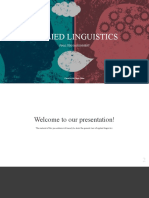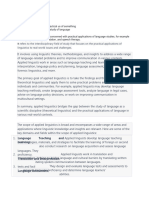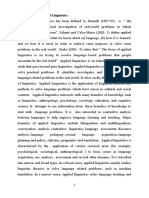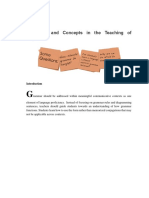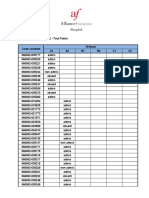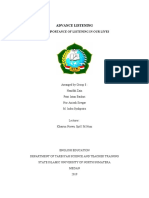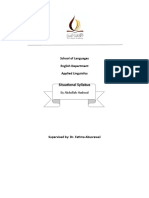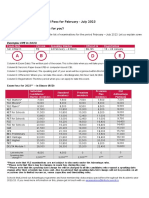0% found this document useful (0 votes)
63 views9 pagesAL Notes
Applied linguistics is an interdisciplinary field that addresses real-world language issues, bridging linguistic theory and practical applications across various domains such as language teaching, sociolinguistics, and forensic linguistics. Its scope is vast, encompassing areas like language education, communication in the workplace, translation studies, and language policy, reflecting its relevance in addressing contemporary communication challenges. The field aims to utilize linguistic knowledge to inform decision-making and improve communication, making it essential in a globalized and digital society.
Uploaded by
malihuh03Copyright
© © All Rights Reserved
We take content rights seriously. If you suspect this is your content, claim it here.
Available Formats
Download as PDF, TXT or read online on Scribd
0% found this document useful (0 votes)
63 views9 pagesAL Notes
Applied linguistics is an interdisciplinary field that addresses real-world language issues, bridging linguistic theory and practical applications across various domains such as language teaching, sociolinguistics, and forensic linguistics. Its scope is vast, encompassing areas like language education, communication in the workplace, translation studies, and language policy, reflecting its relevance in addressing contemporary communication challenges. The field aims to utilize linguistic knowledge to inform decision-making and improve communication, making it essential in a globalized and digital society.
Uploaded by
malihuh03Copyright
© © All Rights Reserved
We take content rights seriously. If you suspect this is your content, claim it here.
Available Formats
Download as PDF, TXT or read online on Scribd
/ 9




















